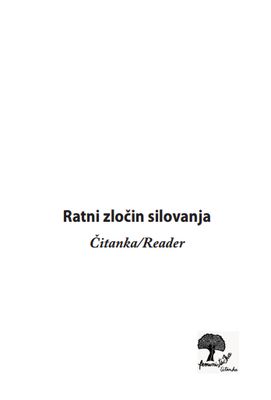
We kindly inform you that, as long as the subject affiliation of our 300.000+ articles is in progress, you might get unsufficient or no results on your third level or second level search. In this case, please broaden your search criteria.

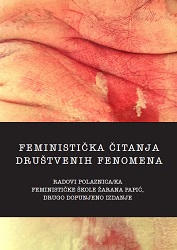
Pojmu silovanja moguće je pristupiti iz brojnih perspektiva jer je to praksa koja je kontinuirano (sve)prisutna od početka pisanja historije svijeta, a istovremeno se o njoj najviše šuti i u najvećoj mjeri se tabuizira. Kad kažemo silovanje, odmah pomislimo na neravnopravan odnos moći između moćnog muškarca i nemoćne žene. Silovanje se dešava i muškarcima, dešava se u drugačijim odnosima moći, uzimalo je različite oblike i bilo društveno tretirano na različite načine. Jedna stvar je definitivno konstantna – silovanje kao pojava postoji u svim društvima, u doba mira i rata, u svim sferama javnog i privatnog.
More...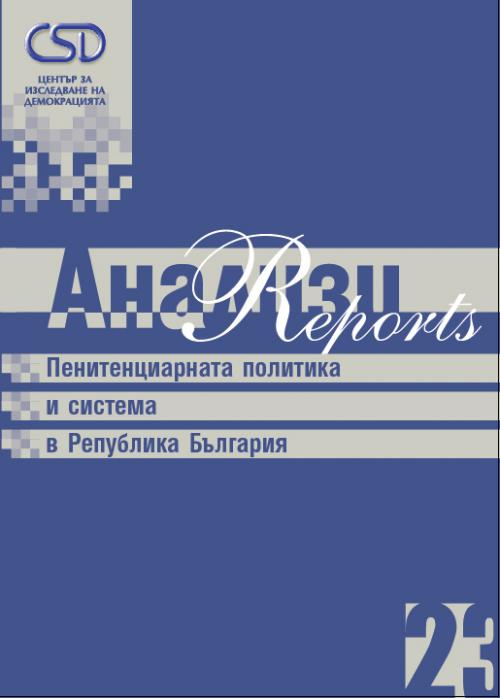
The report explores to what extent Bulgaria has introduced the European standards in the legal regulation of the prison system and the execution of the penal sanction of imprisonment, how are they implemented in practice, what is the State’s penal policy and strategy in this area in general and in respect to drug-addicted prisoners in particular, and what is the opinion of the people working in the penitentiary system and the non-governmental organizations monitoring the activities of penitentiary facilities.
More...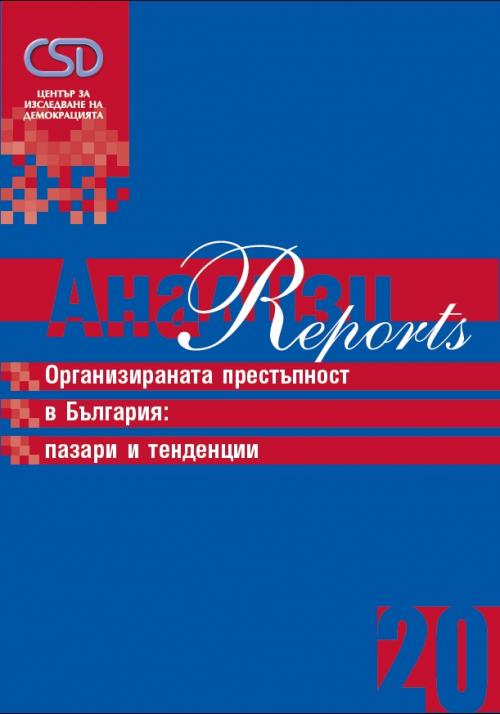
The report Organized Crime in Bulgaria: Markets and Trends summarizes the analyses carried out by the Center for the Study of Democracy throughout the last decade which have focused on specific aspects of organized crime in Bulgaria (contraband, the drug market, tax fraud, human trafficking, arms proliferation, etc.), the systemic spread of corruption, and the linkages between the two. The report presents the latest trends and manifestations (or market niches) of syndicate crime and its particularly damaging effects. It goes further to offer a historical review of the facts and available expertise in the area, and to draw conclusions about the origin, characteristics and developmental features of organized criminality in Bulgaria in the context of the transition to democracy.
More...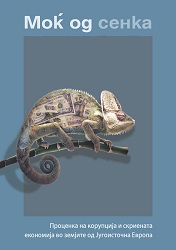
The current report, prepared by the Southeast European Leadership for Development and Integrity (SELDI) — the largest indigenous good governance initiative in SEE — makes an important contribution to the regional approach to anticorruption. It provides a civil society view of the state of corruption and comes in the wake of the 2014 SELDI comprehensive assessment of the various aspects of the legal and institutional anticorruption environments of nine SEE countries. In 2016, SELDI followed up on these assessments with an update of corruption monitoring and a special focus on state capture in the energy sector and the corruption–hidden economy nexus. The report underscores the need for broader political action for reform, which seems blocked or narrowing across the region. Inside pressure for such action has been suffocated by economic necessity and/or ethnic divisions, and the ossification of political and economic establishments. Outside pressure, delivered mostly by the European Union has been seen as wanting in relation to the size of the problems in the past couple of years due to a succession of internal and external crises. The authors underline that in none of the countries in the region has there been a clear sustained policy breakthrough in anticorruption though efforts to deliver technical solutions and to improve the functioning of the law enforcement institutions, mostly with support from the EU, have continued and even intensified in some cases. This has led to further slow decline in administrative corruption levels but at the expense of waning public support for reforms and of declining trust in national and European institutions.
More...
This magazine is the English version of selected articles published in the pages of the review Paměť a dějiny (Memory and History), which is issued by the Institute for the Study of Totalitarian Regimes.This magazine is the English version of selected articles published in the pages of the review Paměť a dějiny (Memory and History) ISSN 1802-8241, which is issued by the Institute for the Study of Totalitarian Regimes. The original version of the journal Paměť a dějiny (Memory and History) is the part of CEEOL also.
More...
Czechs were among Nazi Germany’s first foreign victims, with Prague the last capital to be freed at the end of World War II. Capitulation, occupation and oppression cast a long shadow which persisted into the post-war period.
More...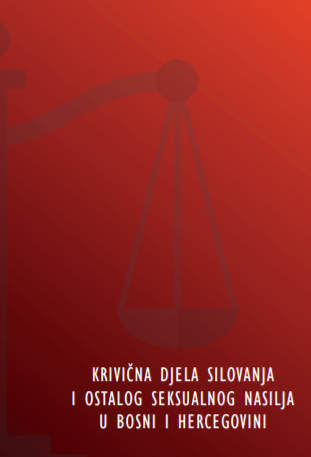
Silovanje se uglavnom definira kao seksualni odnos ili druga vrsta seksualne penetracije počinjena od strane učinioca tog krivičnog djela prema žrtvi, bez njenog pristanka.1 Razlike u definiranju krivičnog djela silovanja postoje između različitih zakonodavstava, u zavisnosti od poimanja djela koja su ta društva usvojila, na osnovu tradicijskih, kulturoloških i društvenih vrijednosti koje se štite krivičnim zakonodavstvima, što je uveliko uvjetovano i stepenom njihovog razvoja u zaštiti ljudskih prava.
More...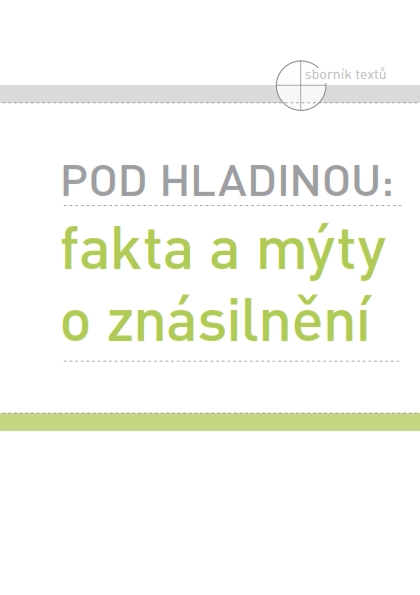

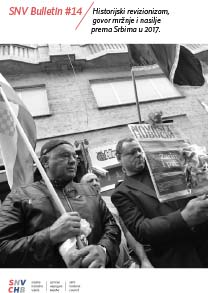
"A group of about three to four people in their 40s approached us. They were visibly inebriated and started swearing at 'our Chetnik mother', asking 'how come we were not ashamed to come to Zagreb'. My wife and I looked at each other and remained silent. What were we to do, we were here with small children? We waited for their rampage to end but it went on for a while and then they left with the message that they would take care of us and the children, should we ever return", Dušan Kovačević, the director of the Novi Sad music festival Exit, said during his visit to Zagreb. The incident occurred in mid-February 2017, the same month that stickers appeared on the streets of Vukovar with the invitation to hang Serbs, and that members of the extreme right party Autochthonous – Croatian Party of Rights (A-HSP) marched through the Croatian capital dressed in black. Last February will also be remembered as a month when an Ustasha graffiti appeared on the Orthodox church of Holy Trinity in Bjelovar, a protected cultural monument. Also in February, the Social Democratic Party (SDP) MP Milanka Opačić, received police protection because of the photomontage inspired by her Serb nationality, published by the portal Dnevno.hr. Dalmatia was no exception to this trend. At the end of February, organisers of a carnival in Kaštele near Split, torched before hundreds of spectators and effigy of Milorad Pupovac, the president of the Serb National Council (SNC) and of the Independent Democratic Serb Party (SDSS).
More...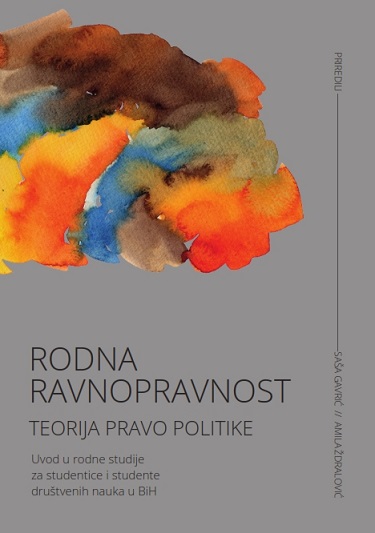
Rodno zasnovano nasilje je kršenje ljudskih prava i oblik diskriminacije i označava svaki čin nasilja koji ima za posljedicu ili će vjerovatno imati za posljedicu fizičku, psihičku, seksualnu ili ekonomsku povredu, odnosno patnju, uključujući i prijetnje takvim djelima, prinudu ili namjerno oduzimanje slobode u javnom ili privatnom životu. Rodno zasnovano nasilje je jedan od najviše rasprostranjenih oblika kršenja ljudskih prava i fenomen koji je duboko ukorijenjen u rodne nejednakosti, počiva na rodnim normama i nejednakim odnosima moći. Može se manifestovati u različitim oblicima ili kao kombinacija više njih: fizičko, emocionalno, psihološko ili seksualno nasilje te ekonomsko nasilje. U ovom tekstu, rodno zasnovano nasilje razumijemo u širem smislu, uključujući i nasilje na osnovu seksualne orijentacije i/ili rodnog identiteta.
More...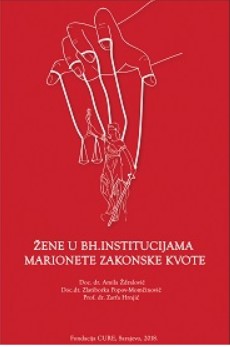
Since most of the available researches and documents that are analyzed cannot find clearly distinguished data by regions as well as separately for these two regions (one of the exceptions is the research of the CURE Foundation "Women who inspire"), a general overview with somespecifics for a better understanding of the state in the field will be done. After that we will give an overview of some local specifics. It should be noted that the regional divisions do not follow the administrative ones as four analyzed municipalities in these two regions belong to the municipality of Eastern Sarajevo, and two belong to the Romanija region.
More...
Document "Socio-economic indicators by municipalities in the Federation of Bosnia and Herzegovina 2016" represents the basic socio-economic indicators of FBiH development by municipalities and ranking the local community according to the level of development. When determining the general development index of each municipality in FBiH, the following indicators were used: the level of employment of the population, the level of unemployment, the number of primary and secondary school students per 1,000 inhabitants, the absent population compared to the 1991 census and the tax revenues per municipality percapita.
More...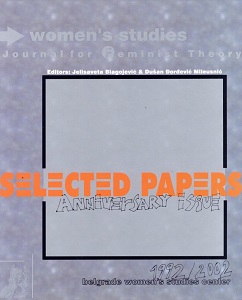
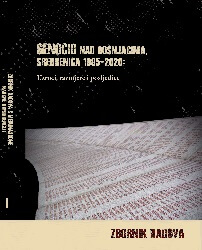
Zbornik radova s Međunarodne naučne konferencije pod nazivom GENOCID NAD BOŠNJACIMA, SREBRENICA 1995–2020: Uzroci, razmjere i posljedice predstavlja izuzetno važan doprinos naučnom sagledavanju namjera, uzroka, ciljeva, razmjera i posljedica izvršenog genocida kao i drugih zločina protiv vrijednosti zaštićenih međunarodnim pravom. Međunarodni kao i drugi naučni skupovi neophodni su kako bi se sagledale i sublimirale činjenice iz perioda agresije, a zbornik radova ostaje u naslijeđe budućim generacijama kao opomena da se zločini nikada i nikome ne ponove. Zbornik sadrži 39 radova u kojima su predstavljena nova istraživanja i saznanja koja s interdisciplinarnog, odnosno društveno-političkog, historijskog, sociološkog, psihološkog, demografskog aspekta elaboririraju rezultate istraživanja o događajima u Bosni i Hercegovini u razdoblju 1992‒1995. Posebnu vrijednost daju i radovi koji tematiziraju društveno-političke posljedice nakon 1995. godine. Zbog obima naučnih radova, zbornik je podijeljen u dva jednako vrijedna i značajna dijela (I i II tom). Koncepcija strukture sadržaja sistematizirana je u šest tematskih cjelina. Prvi tom obuhvata 15 radova, a drugi 24 rada. Zbornik počinje predgovorom prof. dr. Rifata Škrijelja, rektora Univerziteta u Sarajevu, a završava Zaključcima s Konferencije, koje u ime Naučnog odbora potpisuje akademik, prof. dr. Mirko Pejanović.
More...
The paper discusses the international obligations of states and international organizations, which derive from the 1948 Convention on the Prevention and Punishment of the Crime of Genocide. Likewise, the Convention is an international instrument that is an expression of general customary international law. Therefore, it binds the contracting state parties and the non-contracting state parties. The paper analyzes the obligations to prohibit the direct commission of the crime of genocide, non-participation in its commission, prevention and punishment of the perpetrators of this international crime. As a separate chapter, the article deals with particular consequences created for states (and international organizations) following the violation of obligations under the Convention. As these are serious breaches of the obligations arising from the peremptory norms of general international law, a separate and aggravated legal regime of responsibility for states (and international organizations) is therefore provided in international law. In addition to three forms of reparations: restitution, compensation and satisfaction, it refers to the application of other sanctions (measures).
More...
Numerous crimes against children were committed in the aggression against the Republic of Bosnia and Herzegovina (1992–1995). In this paper, the subject of research will be a review of crimes against children in Sarajevo, Mostar and Srebrenica. Numerous documents, data, statements, information, findings and numerous verdicts of convicted war criminals before the ICTY and before domestic courts testify to the crimes committed in these three cities. The mass and manner of committing crimes against children in Sarajevo, Mostar and Srebrenica, as examples of crimes against children throughout the Republic of Bosnia and Herzegovina, prove that the aggressors did not have a sensitivity to the youngest and most protected category of civilians.
More...
The commemoration of the genocide against Bosniaks only in the area of Srebrenica can be interpreted as a way to localization the genocide and accept that the genocide against Bosniaks committed in the period 1992–1995 is reduced to a local level. Reducing genocide to just six days in July 1995 is a kind of trap. The genocide against Bosniaks in the Srebrenica area cannot be separated from the genocide committed between 1992 and 1995 in all occupied cities and cities under siege. The perpetrators of the Srebrenica genocide are the same structures that committed genocide in the rest of the Republic of Bosnia and Herzegovina. The Greater Serbia policy, inspired by ideology, which aims to exterminate the Bosniak population and annex Bosnian territory to neighboring Serbia, pursued a genocidal policy towards the Republic of Bosnia and Herzegovina and Bosniaks continuously in the period from 1992 to 1995. The goals of this paper are to show the genocidal character of the aggressive war against the Republic of Bosnia and Herzegovina and to point out the mistake, which is reflected in localization of the genocide against Bosniaks.
More...
The biggest and most serious crime is the crime of genocide. Precisely because of the severity and complexity of genocide, as a social and security phenomenon, its research must be approached with special care and with the application of scientific theoretical and methodological procedures and concepts. In that way, modern scientific-theoretical knowledge and insights based on their concretization are obtained in empirical research of the crime of genocide. Namely, only through a continuous combination of scientific theory and practice we can gain valid and adequate knowledge about the crime of genocide, its essential characteristics manifested through various forms and methods of execution. If there is a dysfunctionality of the combination of scientific theory and practice, it will inevitably affect the results of research, regardless of the type of research, whether it is scientific, professional-methodical or specifically operational research. In order for such phenomena not to occur, it is necessary to critically and in-depth consider the previous theoretical-empirical research in order to understand the stated problems and overcome possible problems that may arise because the practice does not follow the theory. On the other hand, the interdependence and interdependence of theory and practice is not easy to see. If the separation from each other is real, spatial and temporal, then there is no unity between them, which leaves a trace on the success of the research and the results obtained on the actual scale of the crime of genocide.
More...